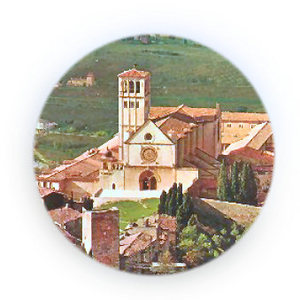Once you enter the walls of Perugia, you will have traversed into a land enclosing some of the most alluring and beauteous Italian art, history, and modern life. To experience Perugia today is to relish in its antiquity in the present; a present that combines all of this ancient town’s art, food, wine, religion, and history into a delicious and rapturous encounter. As the capital of Umbria, Perugia’s position between the lands of the Etruscans and that of the Umbrians capitalizes on its commanding dominion over this majestic region.
Atypically cosmopolitan as compared to its neighboring rural areas, the largest city in Umbria is vibrant with both a populated and bustling university life and artistic beauty that likens the city to an open museum. From the Arco Etrusco and the Pozzo Etrusco, two of the most famous Etruscan ruins visible in Perugia today, to the Sant’Angelo, once Perugia’s city gate built in the thirteenth century, Perugia’s aesthetic artistry is undeniable and embedded in its rich history, which is engrained in every stone, every mosaic, and every piece of architecture still standing.
Tossed around by a multitude of powers, Perugia was once fought over by Octavius Caesar and Mark Antony. Following a few hundred years of being conquered and reclaimed, Perugia was devastated by barbarians and disease after the fall of the Roman Empire. A series of political struggles and brutality persisted in the area until 1540 when Perugia, like many Italian towns at the time, became Papal property. Papal associations in the sixteenth century left Perugia with Christian art and churches, still adding to its imaginative and ornamental landscape. The Cathedral of San Lorenzo, The Basilica of San Domenico, and the Church of San Pietro are just a few of the ecclesiastical designs that comprise Perugia’s finest canonical architecture and religious tradition that have withstood time. Not until 1861 did Perugia unite with the Kingdom of Italy under republican rule.
Walking along the narrow streets and into the famous squares, like Palozzo dei Priori, Perugia invites its inhabitants and visitors into a world of divine richness in its shops, bars, churches, museums, and off-beat resting places to observe the city and its beautiful landscape and lively energy. Today, Perugia is almost 91% Italian but is home to two main universities which host international students. The Universita per Stranieri (the Foreigners University) trains students from all over the world in language, art, and broadcasting, bringing a worldly perspective to this ancient city in its modern state.
Also famous for its chocolate truffles, hunted for during an intense and secretive truffle season lasting from November to March, Perugia produces black truffles, expensive and highly sought after delicacies that are infused into many Italian cuisines. Wine specialties from this region include Orvieto and Sangrantino di Montefalcos, Umbria’s most famous white and red wines, respectively. You can find Perugia on the center of Italy’s map and the center of Italy’s artistic and historical map as well. A visit to Perugia is a visit to the center of all that is Italian beauty in taste, landscape, and history but don’t take my word for it, let your curiosity take over and take a step behind the walls yourself.



